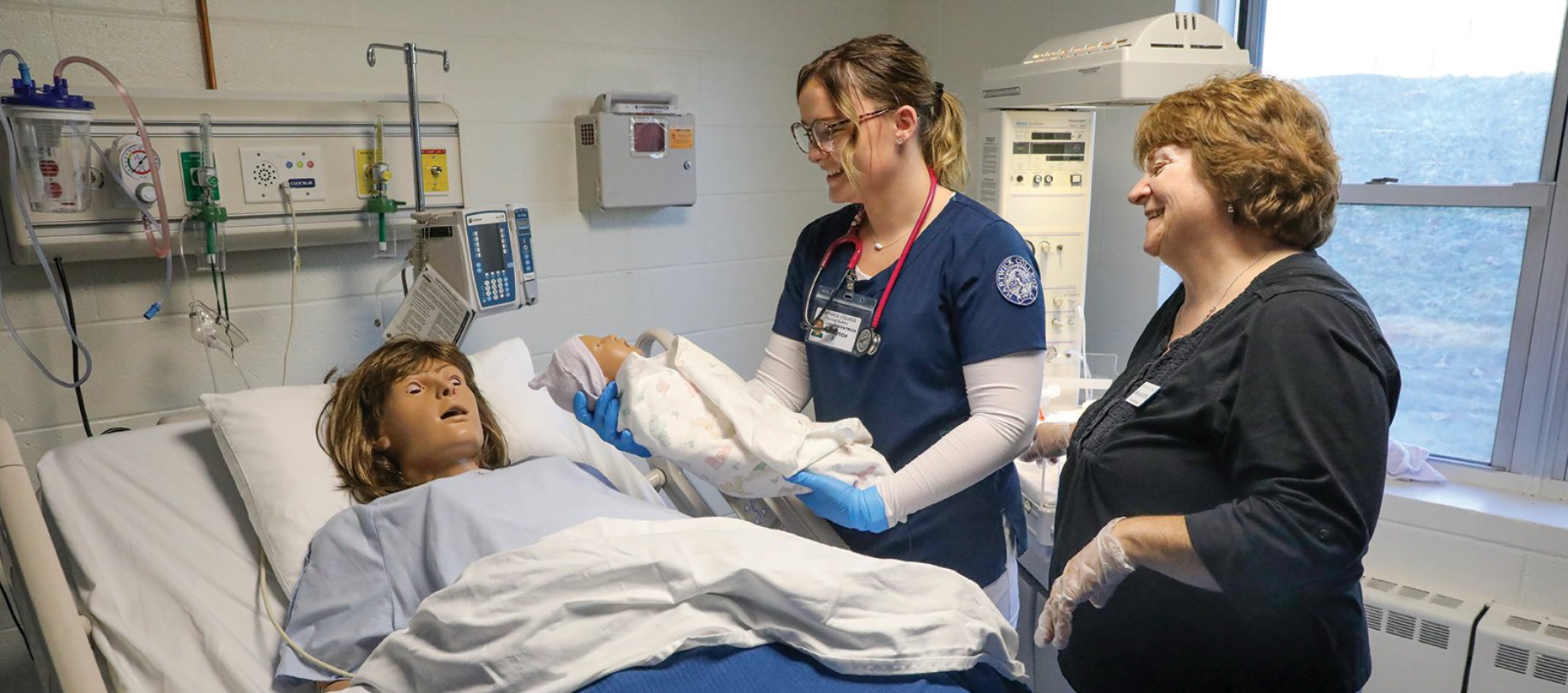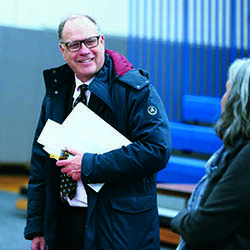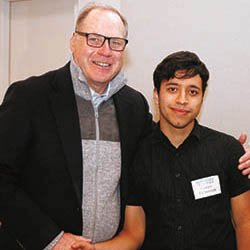Practice Really Does Make Perfect
Noelle, a new mother, is lethargic. Her heart rate is high, her blood pressure plummeting. But student nurse Lauren Kutch ’22 knows exactly what to do.
“I assessed Noelle’s vitals and concluded she was having postpartum hemorrhage,” Kutch says. “We needed to call her provider.” It was the right decision, and Kutch saved the patient.
It sounds like real life, and felt that way to Kutch and her nursing student colleagues. In fact, this was just one of several of the day’s scenarios performed using the realistic obstetrical simulators in the new hospital wing of Hartwick’s Clark Simulation Lab.
Incorporating simulation into a Hartwick nurses’ education has become a priority in recent years.
“Students need to become comfortable with patient care in a setting that’s safe for them so that when they have that first real patient, they know what they have to do,” explains Department Chair and Clinical Associate Professor Pat Grust, PhD, RN, CLNC.
Muscle memory is a key component of the practice, says Assistant Professor of Nursing Melody Best ’84, PhD, WHNP, RN-C, and simulations strengthen that. “Simulation is how you make the learning come out of your hands,” she explains.
When Hartwick was remote during COVID, students couldn’t get into the lab or do their clinicals on-site. Best and her colleagues improvised and put their own hands to work. Equipped with cameras and microphones, senior nursing students virtually directed the care in the simulations, with the professors implementing their instructions. “Because of these simulations, those students were able to graduate on time, and with a 92.59 percent pass rate on the NYCLEX exams,” Best says with pride.
Back in Hartwick’s hospital unit, a professor gives four students an overview of what they can expect in the next simulation exercise. Each member has a part to play: primary or secondary nurse, the observer, or the patient’s family member.
“Doing simulations helps me notice mistakes before I’m in clinicals with real patients,” shares Tim Levy ’22. “Even when I’m the observer, I can see what’s wrong and what needs to be done. That’s really helpful.”
The realism isn’t for the squeamish. “I can press a button and the patient’s blood pressure drops without warning,” explains Best. “Another button and I’m the voice of the agitated patient coming through the mannequin.”
These tech-savvy patients have come a long way since Grust began her teaching, noting that in the early days, mannequins “were like big Raggedy Ann dolls.”
Hartwick’s hospital wing adds six beds to the 11 beds in the Clark Simulation Lab, where first-year students learn everything from safe transport to taking vital signs. The latest addition — a community room complete with a kitchen, bedroom, and bathroom — allows Hartwick nurses to gain experience with patients in home care settings. Proving yet again that no matter where Hartwick nurses go, they’ll be ready.
It’s all part of Hartwick’s Education for Tomorrow. “Nursing is FlightPath ready,” asserts Grust. “We know that the more real an experience is, the better it is for a student. Our graduates go into their career with their feet underneath them.”
Kutch knows the simulations will give her an advantage in her job search. “Interviewers are asking how I made time for patient care during COVID,” she says. “Because we had these simulations, I was able to get that experience.”


